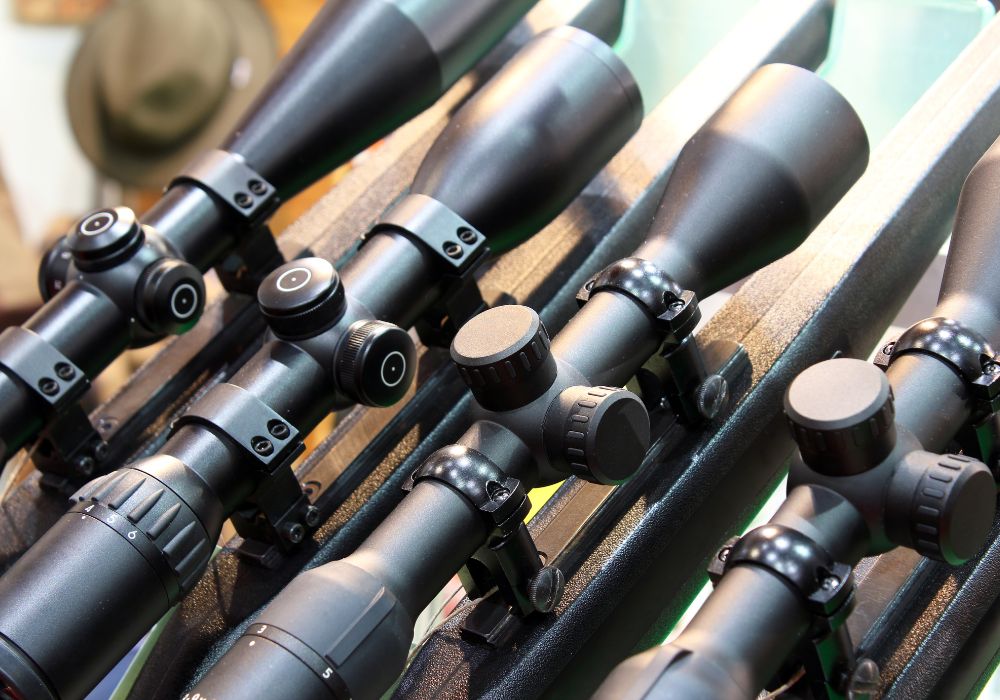Hunting Optics and Scopes

What type of scope and reticle you need will depend upon what game you hunt. Hunters aiming at long-range targets such as deer or hogs should consider optics with increased magnification for optimal success.
Higher magnification scopes typically feature larger lenses to let light in, making them heavier and bulkier than lower-powered models. Furthermore, these higher powers tend to have reduced field of views at higher powers.
Variable scopes
Variable scopes are currently the most sought-after riflescopes on the market. Their versatility allows hunters to adapt them for various hunting situations by changing magnification settings as needed for different environments and hunting conditions. Because each power setting covers or subtends different amounts of the target at each power setting, selecting a variable scope with good light transmission and an adequate objective lens size based on your highest magnification setting is key for effective use.
Opting for a variable scope with a power selector ring at its objective lens will let you adjust its magnification by turning this ring. This feature is particularly helpful if your hunting area varies between dense forest, meadows or open country terrain, and closer range targets that need closer zoom-in, such as varmints or small game. Plus it enables close range zoom ins on varmints/small game and far-off targets clearly! A versatile scope like this makes a perfect choice for hunters and competitive shooters alike; though larger magnification may compromise accuracy when shooting long-range shots.
Night vision scopes
Night vision scopes allow hunters to stay hidden while still seeing in the dark and hunting in all types of weather conditions that would normally prevent them from staying undercover and shooting accurately.
Traditional night vision technology uses an image intensifier tube to collect visible and infrared light. This light passes through an image intensifier tube into an image intensifier tube which converts the light to electrons which then pass through a microchannel plate which multiplies and amplifies their electric signal, producing images associated with night vision devices in green or white hues.
Dependent upon your needs, you may wish to invest in a scope with multiple modes and settings for various forms of lighting. Such scopes can save both time and money by offering different magnification levels; making them an excellent option for hunting and tactical applications, including keeping tabs on your dog during low-light conditions.
Lens coatings
Quality optics depend not only on the materials and prisms utilized in binoculars or scopes, but also on their lens coatings – thin coatings which help minimize internal light scatter that degrades image brightness and clarity as well as minimize distortions.
Optics without lens coatings may lose up to five percent of available light; with multi-coating this figure can be reduced by as much as tenth of one percent. Coatings may be applied only on some or all air-to-glass surfaces; fully multi-coated optics will feature layers of coating on every lens and prism surface.
Anti-reflection coatings enhance light transmission, reduce glare and flare, and permit use in low light conditions. Exterior lens surface coatings that shed fog, fingerprints, and scratches provide additional benefits; although no coating can be 100% effective under all circumstances.
Reticles
Reticles are patterns of dots or lines within your scope which help you aim at your target. A variety of reticles exist to meet various needs; duplex, mil-dot and BDC reticles may all work effectively depending on the application.
Duplex reticle are straightforward designs intended for hunting and basic target shooting at close-to-medium distances, while they may not be ideal for extreme long range target shooting or precision hunting.
For accurate subtenting at all magnification levels, look for a second-focal-plane (SFP) reticle. This style keeps its size consistent throughout zoom range and is therefore recommended for law enforcement snipers, hunters and shooters with good eyesight.
Etched reticles, which are incised on one of the lens surfaces, provide more precise aiming points than simple wire reticles. Furthermore, their illuminated patterns provide both daytime and low light visibility; such as those found on Primary Arms SLx 1-6×24 SFP Rifle Scope with ACSS NOVA Reticle or Leupold optics featuring their FireDot BDC Reticle.
